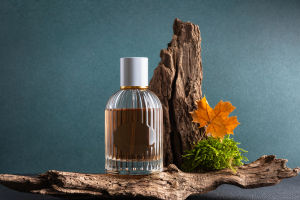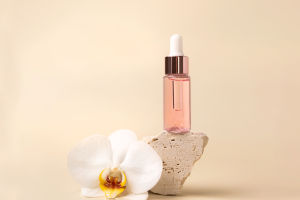Cosmetics are products used to enhance or change the appearance of the face, fragrance, or body texture. They are usually a mixture of natural or synthetic compounds.
Cosmetics applied to the face to enhance appearance are also known as makeup, which includes lipstick, mascara, eye shadow, foundation, blush, highlighter, and many other products.
The history of cosmetics dates back to the emergence of human society. In primitive societies, some tribes smeared animal oil on their skin during sacrificial activities to make their skin look healthy and shiny. This is also the earliest form of skin care behaviour.
The production of cosmetics today is largely dominated by a handful of multinational corporations that emerged in the early 20th century. However, the distribution and sale of cosmetics are fragmented across many industries. In 2005, the cosmetics industry's market size in the United States, Europe, and Japan was about 70 billion euros per year.
In Germany, the cosmetics industry created retail sales of 12.6 billion euros in 2008, making the German cosmetics industry the third largest in the world after Japan and the United States. In 2008, German cosmetics exports reached 5.8 billion euros, while cosmetics imports totalled 3 billion euros.
Cosmetics are classified according to the objects of use and can be divided into the following three types:
Cosmetics for teenagers: The skin of teenagers is in the developmental stage, and the skin condition is unstable, making them more prone to acne. Raw materials that regulate sebum secretion can be selected to prepare weak oily cosmetics.
Women's cosmetics: The selection of women's cosmetics should consider their skin condition and age group. Generally speaking, dry skin chooses moisturizing cosmetics, while oily skin chooses refreshing and lightweight cosmetics.
Men's cosmetics: Most men have oily skin, so raw materials suitable for oily skin should be selected. Shaving cream and aftershave lotion are special cosmetics for men.
The sequence of applying cosmetics is usually from a thin texture to a thick texture. The reason is that skin care products with thin textures have low molecular weight and are more easily absorbed by the skin.
Thick skin care products often have thickeners or other high molecular weight polymers, which form a protective film on the skin surface to prevent the loss of nutrients and moisture. It can also prevent external bacteria and pollutants from entering the skin, but it is not easily absorbed.
Although cosmetics generally do not cause much harm to the skin when removed correctly, long-term use may cause certain damage. Harmful substances are present in cosmetics, and long-term use may cause an imbalance of water and oil, and aggravate or cause acne on the face.
Long-term makeup may make the pores enlarged. The skin has many pores for ventilation, and cosmetics can block the pores. This is because makeup is not entirely removed, causing some cosmetics to remain on the skin. These residues are invisible to our eyes.
Long-term makeup may cause skin colour differences. Cosmetics contain more pigments, and long-term makeup can have a certain impact on the skin, especially concealer and foundation, which may have some irritating hazards to the skin.
Cosmetics can be irritating to the skin as they contain a variety of chemical ingredients that may cause symptoms such as itching and dermatitis in contact with the skin, especially for people with sensitive skin.
Cosmetics play a significant role in enhancing or changing one's appearance. However, it is essential to choose the right type of cosmetics according to skin type, age group, and occasion.
It is also crucial to follow the correct sequence of application to ensure maximum benefits. While cosmetics can improve one's appearance, it is equally important to remove them correctly to prevent any harm to the skin in the long run.


